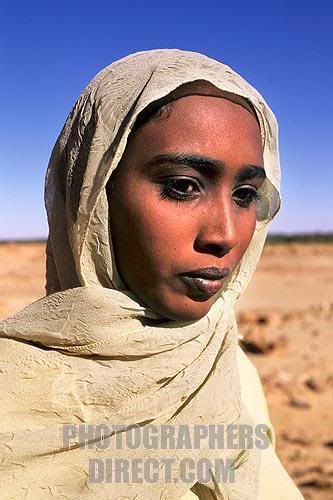

"The media's the most powerful entity on earth. They have the power to make the innocent guilty and to make the guilty innocent, and that's power. Because they control the minds of the masses.”
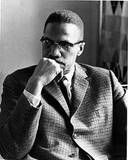
Malcolm X (pronounced /ˈmælkəm ˈɛks/; May 19, 1925 – February 21, 1965), born Malcolm Little and also known as El-Hajj Malik El-Shabazz.
Shem Hotep ("I go in peace").

The above paper is so ture, but becareful of what you wish for.
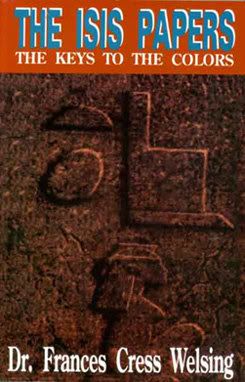
Read a Book. The Isis Papers: The Keys to the Colors by Dr. Frances Cress Welsing.
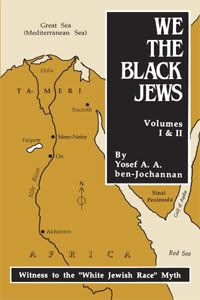
Read a Book. We, the Black Jews: Witness to the 'White Jewish Race' Myth, Volumes I & II (in One) by Yosef Ben-Jochannan.

Ancestor's Prayer
Our great African parents who are among us we humbly offer our thanks for the many blessings you have given.
We extend our love to its ultimate state of being -For the suffering that you have endured so that we may not suffer so.
Mothers of our great African nation Fathers of our African selves -
We invoke you to further lead and guide us to a higher understanding
Of our true greatness -And a more encompassing dedication of love for our African people.
Parents of all African children; Guide us toward a greater unity -
Guide us in a stronger African Value System and lead us into the zenith of respect and love for our people, through education and the "Family Communal Structure"
We swear upon the heritage and legacy that you have left us to uphold and sustain our rightful status on this earth, and to continue the struggle for the total mental and physical liberation of all African People.

ADUPE ARIKU BABA WA (Thank you, by the Spirit of Our Ancestors)
Ase'
When We Were Kings
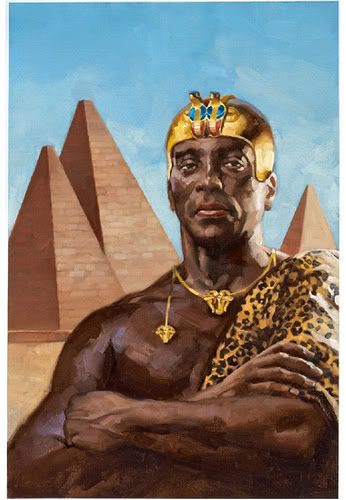
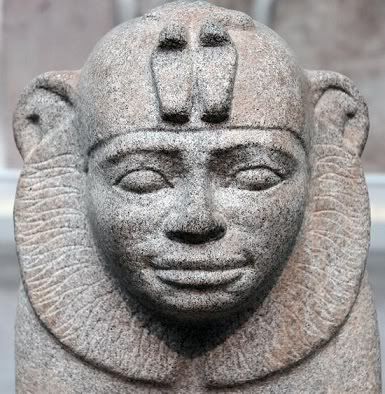
Taharqa was king of Egypt
Taharqa was king of Egypt, and a member of the Nubian or Twenty-fifth dynasty of Egypt. His reign can be dated from 690 BC to 664 BC. He was the son of Piye, the Nubian king of Napata who had first conquered Egypt, and the younger brother and successor of Shebitku.

Kenneth Kitchen's book, The Third Intermediate Period in Egypt, provides a wealth of information about Taharqa and confirms that his reign lasted a minimum of 26 Years.[3] This is based on the evidence from Serapeum stela Cat. 192 "which records that an Apis bull who was born and installed (4th month of Peret, day 9) in Year 26 of Taharqa died in Year 20 of Psammetichus I (4th month of Shomu, day 20) having lived 21 years. This would give Taharqa a reign of 26 years and a fraction, in 690-664 B.C."[4] Taharqa was the brother of Shebitku or Sebaq-tawy, the previous king of Egypt. Taharqa explicitly states in Kawa Stela V, line 15 that he succeeded Shebitku with this statement: "I received the Crown in Memphis after the Falcon (ie: Shebitku) flew to heaven."

Scholars have identified him with Tirhakah, king of Ethiopia, who waged war against Sennacherib during the reign of King Hezekiah of Judah (2 Kings 19:9; Isaiah 37:9) and drove him from his intention of destroying Jerusalem and deporting its inhabitants—a critical action that, according to Henry T. Aubin, has shaped the Western world. For at this time, the Bible had not yet been written, nor had the concept of YWEH been fully defined. The events in the Biblical account are believed to have taken place in 701 BC, whereas Taharqa came to the throne some ten years later. A number of explanations have been proposed: one being that the title of king in the Biblical text refers to his future royal title, when at the time of this account he was likely only a military commander.
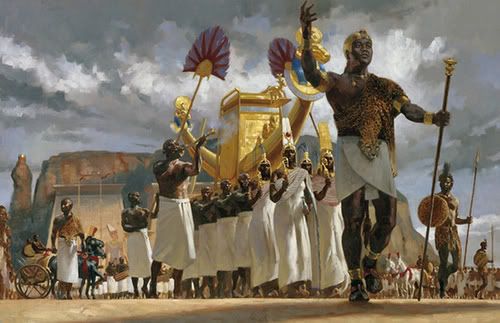
Taharqa indulged in rebuilding the temple at Kawa, across the Nile from present-day Dongola, which became a major center for the Nubian kings. He built at a number of other sites in Nubia, and carried out numerous restoration and building projects at the temple of Amun at Karnak—especially the First Court of Amun there—as well as at Medinet Habu. He was described by the ancient Greek historian Strabo as being counted among the greatest military tacticians of the ancient world.
It was during his reign that Egypt's enemy Assyria at last invaded Egypt. Esarhaddon led several campaigns against Taharqa, which he recorded on several monuments. His first attack in 677 BC, aimed to pacify Arab tribes around the Dead Sea, led him as far as the Brook of Egypt. Esarhaddon then proceeded to invade Egypt proper in Taharqa's 17th regnal year, after Esarhaddon had settled a revolt at Ashkelon. Taharqa defeated the Assyrians on that occasion. Three years later in 671 BC the Assyrian king captured and sacked Memphis, where he captured numerous members of the royal family. Taharqa fled to the south, and Esarhaddon reorganized the political structure in the north, establishing Necho I of the 26th dynasty as king at Sais.
Upon the Assyrian king's departure, however, Taharqa intrigued in the affairs of Lower Egypt, and fanned numerous revolts. Esarhaddon died before he could return to Egypt, and it was left to his heir Assurbanipal to once again invade Egypt. Assurbanipal defeated Taharqa, who afterwards fled first to Thebes, then up the Nile into his native homeland—Nubia. Taharqa died there in 664 BC and was succeeded by his appointed successor Tantamani, a son of Shabaka. Taharqa was buried at Nuri.

Taharqa was king of Egypt

Moshoeshoe I
Moshoeshoe (c.1786[1] -March 11, 1870) was born at Menkhoaneng in the Northern part of present-day Lesotho. He was the first son of Mokhachane, a minor chief of the Bakoteli lineage- a branch of the Koena (crocodile) clan(sic). In his early childhood, he helped his father gain power over some other smaller clans. At the age of 34 Moshoeshoe formed his own clan and became a chief. He and his followers settled at the Butha-Buthe Mountain.
Moshoeshoe was born during a famine. He was given the name Lepoqo (Lepoqo means disasters) at his birth, due to the deprived conditions into which he was born and raised. Moshoeshoe’s parents had a large influence on the child as he grew up, teaching him about virtues and discipline in a politically inclined way. Moshoeshoe gained his place as a leader after a punitive raid on a cattle thief, returning with hundreds of heads of cattle, earning him his name “Moshoeshoe (the shaver)” as he was said to have shaved off the beard of his adversary (Ramonaheng). Moshoeshoe’s reign coincided with the growth in power of the well-known Zulu chief, Shaka. During the early 1800s Shaka raided many smaller clans along the eastern coast of Southern Africa, incorporating parts of them into his steadily growing Zulu chiefdom. Various small clans were forced to flee the Zulu chief. An era of great wars of calamity followed, known as the Mfecane/lifaqane. It was marked by aggression against the Sotho people by the invading Nguni clans. The attacks also forced Moshoeshoe to move his settlement to the Qiloane plateau. The name was later changed to Thaba Bosiu or "mountain of the night" because it was believed to be growing during the night and shrinking during day. It proved to be an impassable stronghold against enemies.
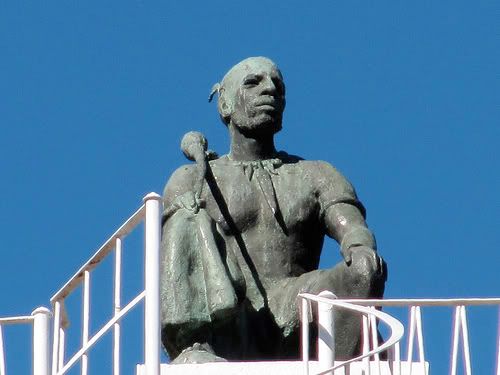
The most significant role Moshoeshoe played as a diplomat was his acts of friendship towards his beaten enemies. He provided land and protection to various people and this strengthened the growing Basotho nation. His influence and followers grew with the integration of a number of refugees and victims of the wars of calamity.
By the latter part of the 1800s, Moshoeshoe established the nation of the Basotho, in Basutoland. He was popularly known as Morena e Moholo/morena oa Basotho (Great King/King of the Basotho).
Guns were introduced with the arrival of the Dutch from the Cape Colony and Moshoeshoe determined that he needed these and a white advisor. From other tribes, he heard of the benefits missionaries brought. By chance, three representatives of the Society arrived in the heart of southern Africa : Eugene Casalis, Constant Gosselin and Thomas Arbousset. Moshoeshoe brought them to his kingdom. Later Roman Catholic Missionaries were to have a great influence on the shape of Basotho History (the first being, Bishop M.F. Allard O.M.I. and Fr. Joseph Gerard O.M.I.).
From 1837 to 1855 Casalis played the role of Moshoeshoe's Foreign Advisor. With his knowledge of the non-African world, he was able to inform and advise the king in his dealings with hostile foreigners. He also served as an interpreter for Moshoeshoe in his dealings with white people, and documented the Sesotho language.
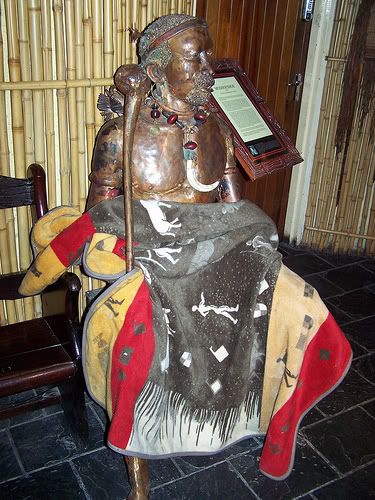
In the late 1830s, Boer trekkers from the Cape Colony showed up on the western borders of Basutoland and subsequently claimed land rights. The trekkers' pioneer in this area was Jan de Winnaar, who settled in the Matlakeng area in May-June 1838. As more farmers were moving into the area they tried to colonise the land between the two rivers, even north of the Caledon, 'claiming' that it had been abandoned by the Sotho people. Moshoeshoe, when hearing of the trekker settlement above the junction, stated that "... the ground on which they were belonged to me, but I had no objections to their flocks grazing there until such time as they were able to proceed further; on condition, however, that they remained in peace with my people and recognised my authority.
Eugene Casalis later remarked that the trekkers had humbly asked for temporary rights while they were still few in number, but that when they felt "strong enough to throw off the mask" they went back on their initial intention.
The next 30 years were marked by conflicts.
Moshoeshoe signed a treaty with the British Governor, Sir George Thomas Napier. Among the provisions of this treaty was the annexation of a tract of land (now called the Orange River Sovereignty) that many Boers had settled. The outraged Boers were suppressed in a brief skirmish in 1848, but remained bitter at both the British and the Sotho.
The situation erupted in 1851. A British force was defeated by the Sotho army at Kolonyama, touching off an embarrassing war for the British. After repulsing another British attack in 1852, Moshoeshoe sent an appeal to the British commander that allowed him to save face. Once again, diplomacy saved the Sotho kingdom. After a final defeat of the Tloka in 1853, Moshoeshoe reigned supreme.
However, the British pulled out of the region in 1854, causing the de facto formation of two independent states: the Boer Orange Free State and the Sotho Kingdom.
In 1858 Moshoeshoe defeated the Boers in the Free State-Basotho War and in 1865 Moshoeshoe lost a great portion of the western lowlands. The last war in 1867 ended only when the British and Moshoeshoe appealed to Queen Victoria, who agreed to make Basutoland a British protectorate in 1868. The British were eager to check Boer advances, and Moshoeshoe, with advice from Eugene Casalis, realized that continued pressure from the Boers would lead to the destruction of his kingdom.
In 1869, the British signed a treaty at Aliwal with the Boers. It defined the boundaries of Basutoland and later Lesotho; those boundaries have not changed. The arable land west of the Caledon River remained in Boer hands, and is referred to as the Lost or Conquered Territory. This effectively reduced Moshoeshoe's kingdom to half its previous size.
Although he had ceded much territory, Moshoeshoe never suffered a major military defeat and retained most of his kingdom and all of his culture. His death in 1870 marked the end of the traditional era and the beginning of the modern colonial period. Moshoeshoe Day is a national holiday in Lesotho celebrated every year on March 11 to commemorate the day of Moshoeshoe's death.





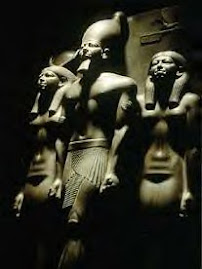









No comments:
Post a Comment